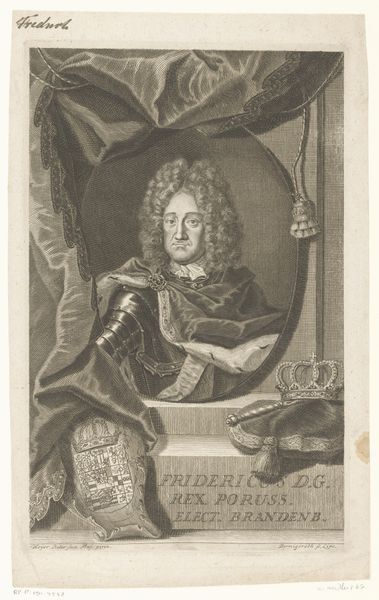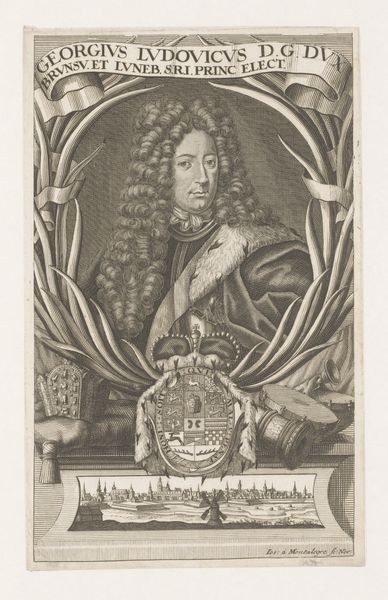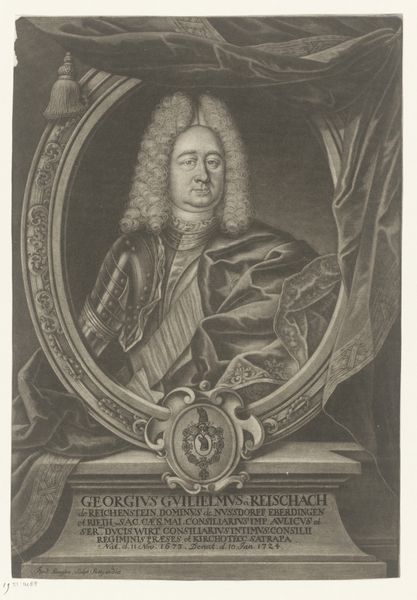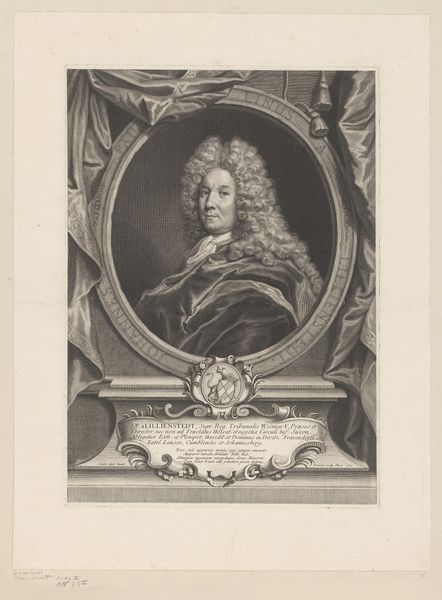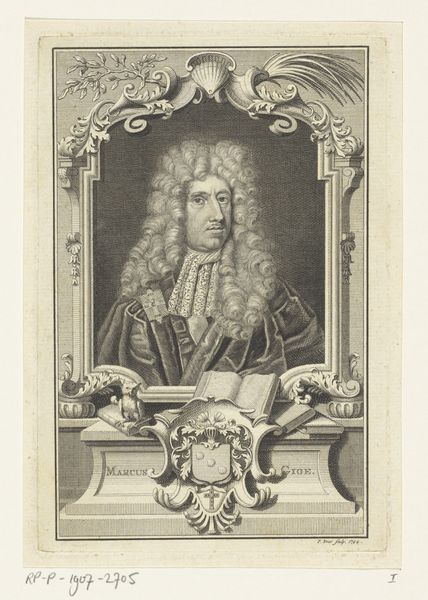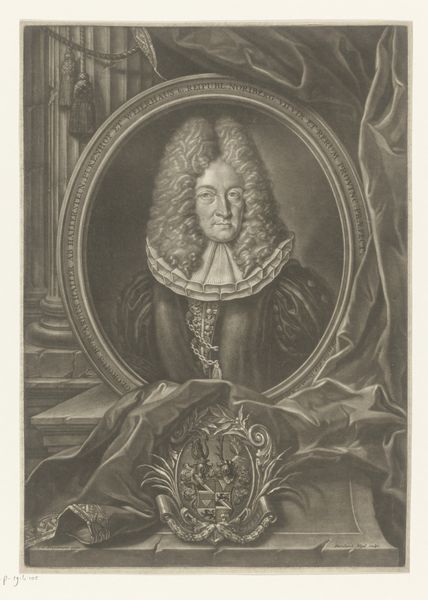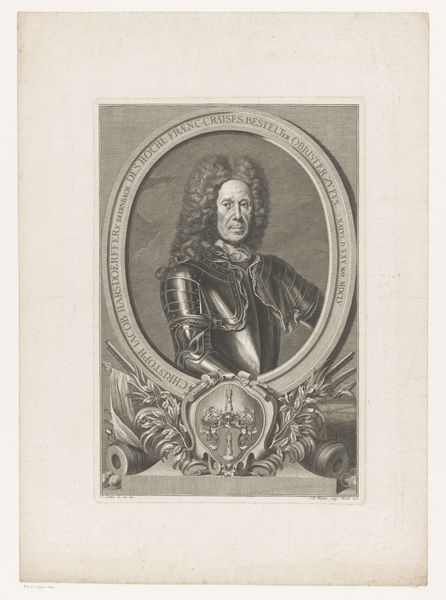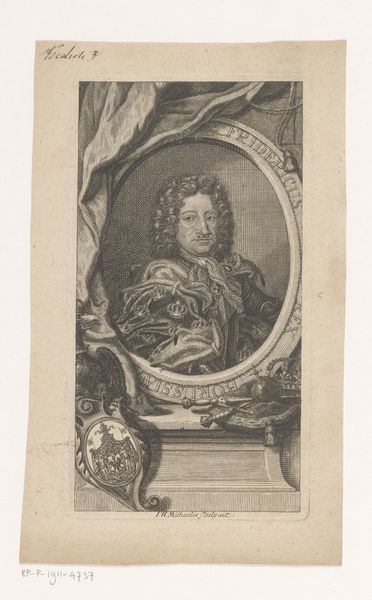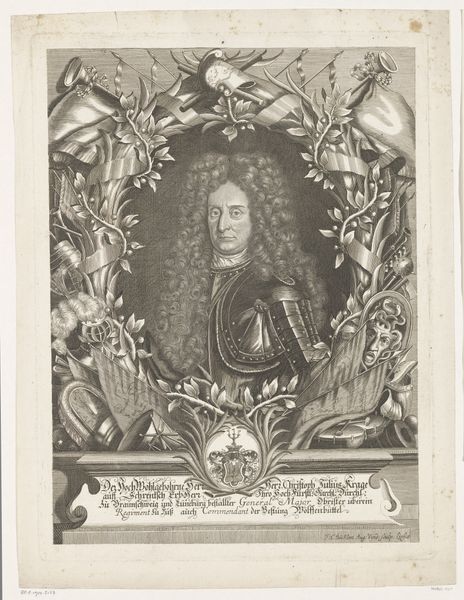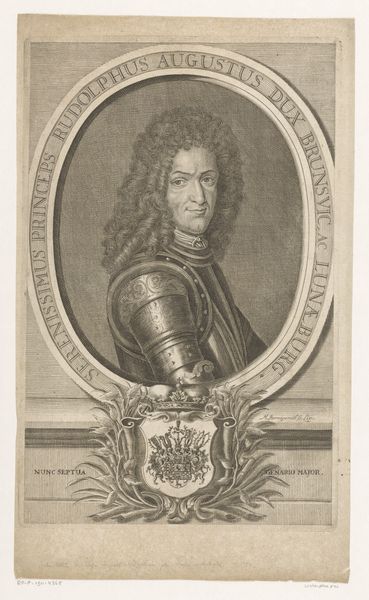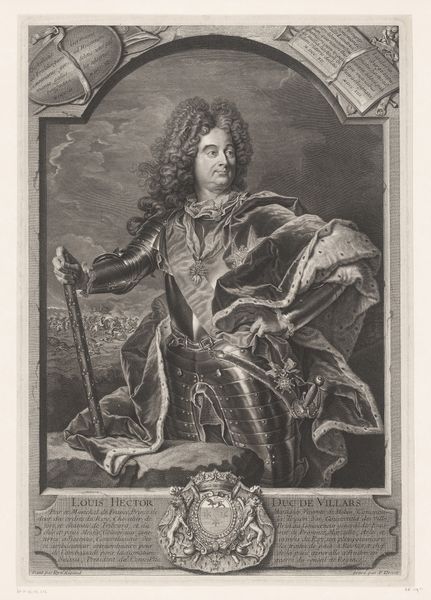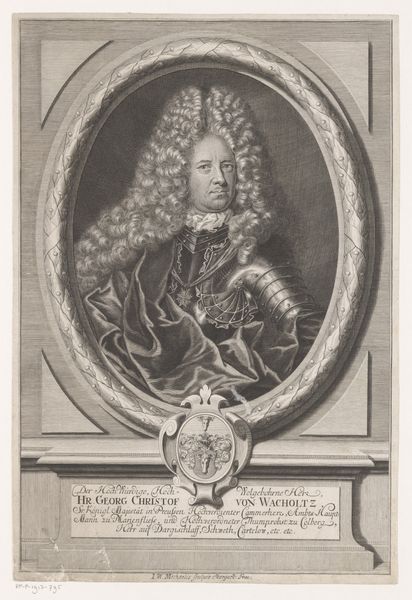
print, engraving
#
portrait
#
baroque
# print
#
old engraving style
#
cityscape
#
history-painting
#
engraving
Dimensions: height 291 mm, width 180 mm
Copyright: Rijks Museum: Open Domain
This print by Joseph de Montalegre depicts Frederick I, King of Prussia, and it was made using a technique called engraving, where lines are incised into a metal plate to hold ink. Notice how this process influences the image's appearance. The stark contrast of black ink on white paper creates a formal, graphic quality. The engraver's skill is evident in the fine lines that define Frederick's elaborate wig, fur stole, and the cityscape below. This wasn't just about artistic expression; it was about meticulous labor. The image's precision reflects the engraver's mastery, but also the many hours of focused work needed to create such a detailed portrait. Engraving has a long history, linking artistry with industry. Prints like these were often made in multiples, allowing the King's image to circulate widely. By focusing on the material and process, we understand how this print participates in a larger system of labor, politics, and consumption.
Comments
No comments
Be the first to comment and join the conversation on the ultimate creative platform.

